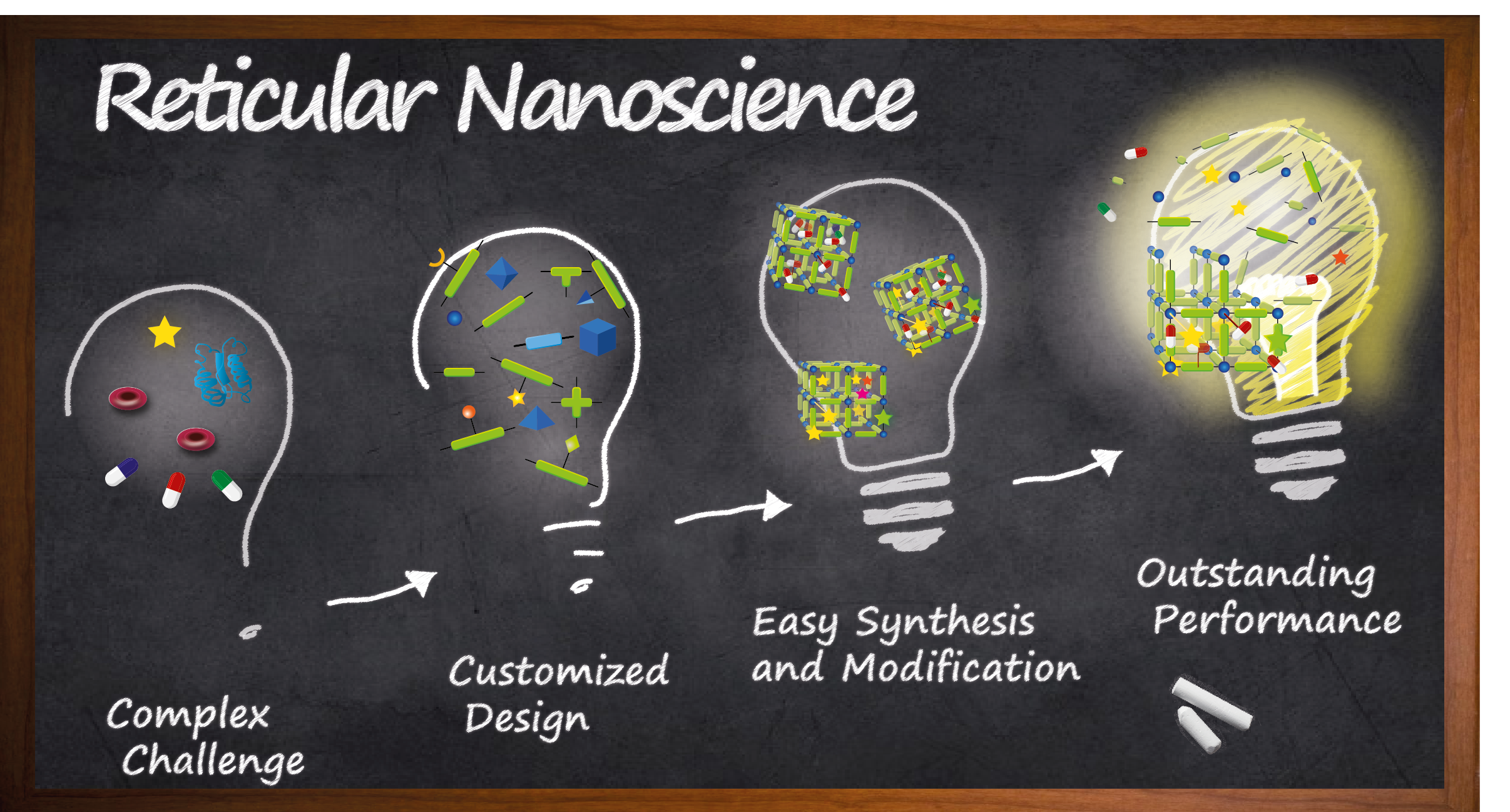Reticular Nanoscience: Bottom-Up Assembly Nanotechnology
In the last decades, the material class of reticular materials, i.e., metal-organic and covalent organic frameworks (MOFs and COFs), has attracted increasing attention due to their rich chemistry and usability in various applications. Downsizing them from the macroscopic to nanometer length scale significantly boosts the materials properties, which opens up even more unexpected possibilities. To create reticular nanoparticles in a programmable manner, bottom-up approaches that mimic Mother Nature’s design principle have proven extremely beneficial: by linking molecular building unit-by-building unit into framework nanoparticles, they allow a high degree of control over the geometric position and order of atoms, and thus enable the preparation of novel, highly functionalized reticular nanoparticles that are mainly limited to one’s own creativity (Figure below).
To draw the attention of researchers to this fascinating material class and to push the preparation of multifunctional, next-generation materials, we highlighted the most important unique aspects of reticular nanoparticles, the current ‘state-of-the-art’ of their synthesis, functionalization and characterization, and those applications that could be revolutionized by their utilization in our perspective:
- Am. Chem. Soc. 2022, 144, 17, 7531–7550 (DOI: 10.1021/jacs.1c11507)
Moreover, the concept of augmented reticular chemistry is introduced, in which reticular framework nanoparticles themselves are used as building units for the formation of super-materials with outstanding performances. Our perspective sheds light on the highly rewarding, and diverse research direction of reticular nanoparticles and emphasizes their great opportunity to customize novel nano-sized reticular materials with respect to their potential applications, which can revolutionize the future design of materials.



